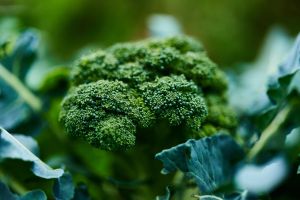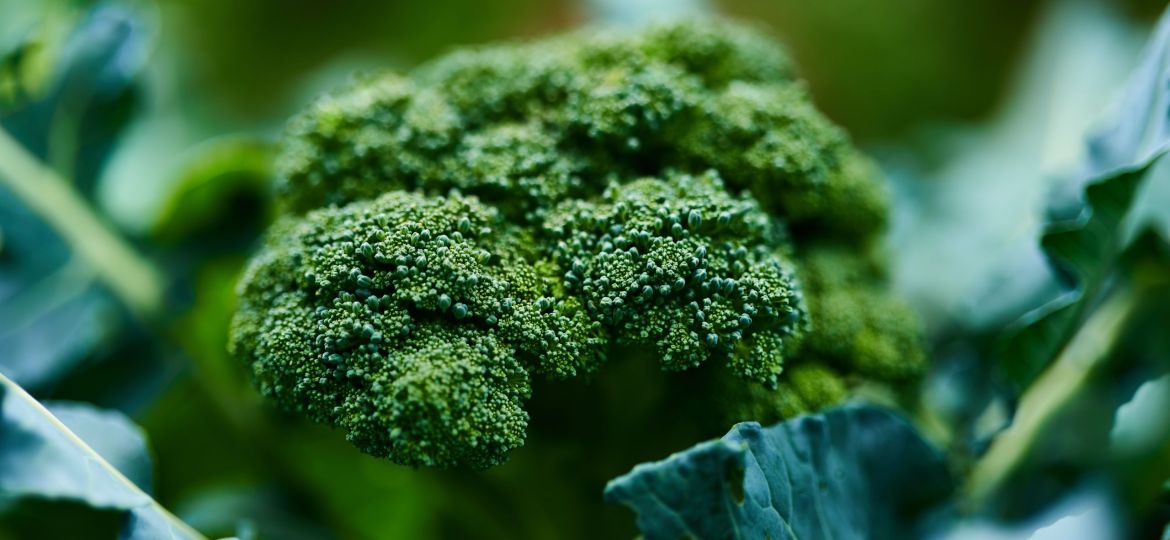By Michele Broad NP-C
Veggie Groove Contributor and Owner of WellWomenNetwork.com
 You probably didn’t see what was so great about broccoli as a child, but the truth is that this vegetable is one of nature’s superfoods. From its stalk to its flowering head, broccoli is packed with nutrients and vitamins needed for your overall health and well-being. This vegetable has been around for centuries, and it has always been used and viewed as the perfect go-to superfood.
You probably didn’t see what was so great about broccoli as a child, but the truth is that this vegetable is one of nature’s superfoods. From its stalk to its flowering head, broccoli is packed with nutrients and vitamins needed for your overall health and well-being. This vegetable has been around for centuries, and it has always been used and viewed as the perfect go-to superfood.
It’s healthy, can be eaten in a number of different ways, comes with a variety of benefits, is easy to cook, and offers the body a single boost of minerals in every serving. For a comprehensive understanding of this perfect food, check out the following information.
The Anatomy of Broccoli: Understanding the Veggie from Top to Bottom
Many people aren’t aware of just how much there is to know about broccoli. Yes, it’s a vegetable, and yes, it’s incredibly good for you—but that’s not all. This anatomical breakdown of broccoli should teach you everything you need to know about this vegetable and more. So, let’s begin with the basics.
What Exactly is Broccoli?
An edible green plant belonging to the cabbage family, broccoli is a vegetable that originated in Italy as many as 2,000 years ago. While its flowering head is usually used as a vegetable in a variety of meals, the entire vegetable can be eaten and contains a host of nutritional values.
Arranged like a small tree, broccoli closely resembles cauliflower, which is another vegetable of the same species. Due to its rich green color, broccoli is high in antioxidants and other essential vitamins.
A broccoli plant is made up of three main parts:
- The root system
- Leaves and stalk
- The crowning head
When still in the ground, the root system of the broccoli plant needs nutrient-rich soil in order to grow and support the plant. Broccoli plants need to be watered often in order to keep the plant hydrated and well fed as it approaches maturity.
The leaves and stalk are lesser-known parts of the broccoli plant because gardeners and farmers often discard these pieces at harvest. However, they are actually edible and highly nutritious; my African Grey Parrot loves these parts. Broccoli leaves can be long and thin or short and wide and grow along the stalk. They are often blue-green in color and thicken towards the head of the plant.
The crowning head is the part of the broccoli most familiar to people. Sometimes called the curd or the head, the top of the broccoli is most commonly eaten. This head is made of small, dense edible floral shoots. Usually, the head is harvested long before the shoots, or little florets open. Sometimes the heads are purple, but the green shoots are most commonly cultivated by gardeners. The best growth environment for the broccoli plant is in full sun, with plenty of water, and of course, the nutrient-rich soil mentioned earlier.
Why is Broccoli Considered a Super Food?
Broccoli is a great food to eat when you are looking to get extra fiber and vitamin C into your diet. It contains various nutrients that hold anti-cancer properties and support a strong, healthy immune system.
A great source of natural energy, broccoli is low in carbs and fat but high in protein.
Nutrients: It contains B vitamins, Thiamine, Niacin, Riboflavin, and Folate as well as traces of calcium, iron, potassium, and phosphorous.
High Fiber: Broccoli is also high in fiber that supports heart health, helps lower bad cholesterol and supports healthy weight management because it is filling and very low in calories.
Detox Aid: Broccoli has a strong, positive impact on your body’s detoxification system.
Improved Vitamin D: When large supplemental doses of vitamin D are needed to offset deficiency, ample supplies of vitamin K and vitamin A help keep our vitamin D metabolism in balance. Broccoli has an unusually strong combination of both vitamin A (in the form of beta-carotene) and vitamin K. For people faced with the need to rebuild vitamin D stores through vitamin D supplements, broccoli may be an ideal food to include in the diet.
Anti-Cancer Fighting Properties: Broccoli has a unique combination of antioxidant, anti-inflammatory, and pro-detoxification components that make it a unique food in terms of cancer prevention.
To Get The Most out Of Broccoli the Best Way to Prepare it is:
Broccoli can be steamed, boiled, stir-fried, or eaten raw. However, overcooking or boiling broccoli has been proven to reduce the levels of anti-carcinogenic compounds present in the food. It is, therefore, best to steam it until it reaches a bright green color, but no longer. Steaming it can also help lower your cholesterol levels as the fibers in the broccoli can bind together better and this, in turn, helps the bile acid in your gallbladder be excreted along with cholesterol.
How You Can Add Broccoli to Your Diet
Adding broccoli to your daily diet can do wonders for your health. Aside of broccoli at dinner, a broccoli salad for lunch, chopped broccoli along with eggs or in an omelet for breakfast, and even eaten raw as a healthy snack is a great way to include this superfood in your diet.
All parts of broccoli can also be juiced, including the stems, leaves, and heads, and it makes a great addition to green juice, along with kale, spinach, green apples, celery, cucumber, and lemon.


